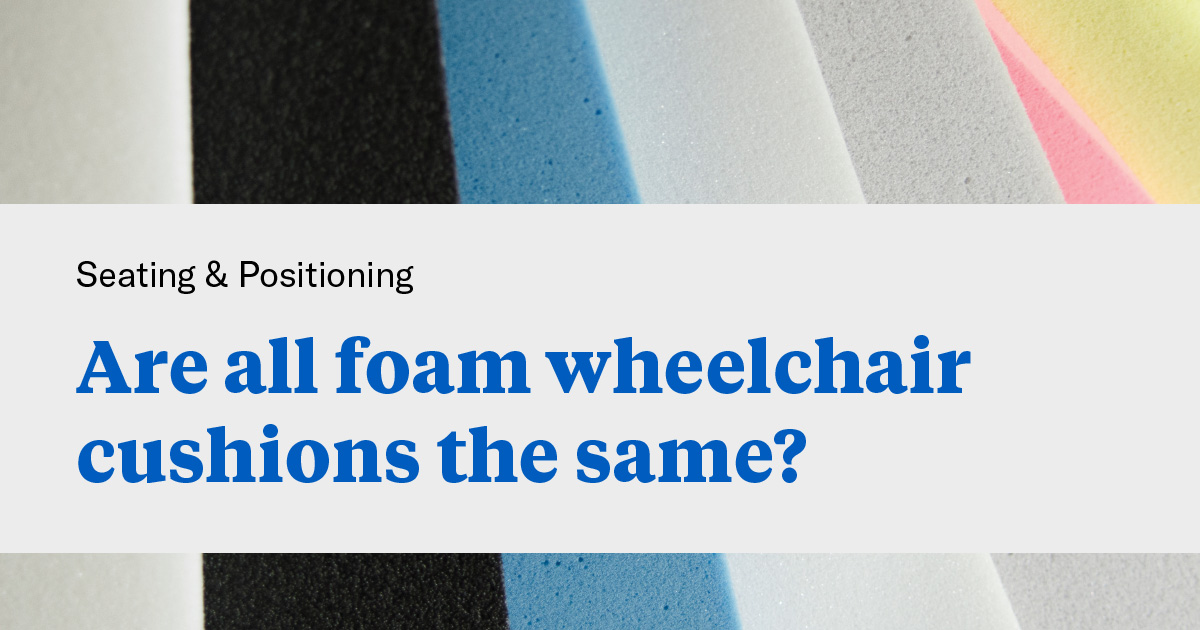Looking for more information on seating and positioning? Check out our digital page all about Permobil seating and positioning products here. This is part 6 of our series on seating and positioning. See part 1, part 2, part 3, part 4, and part 5.
In my many years as an occupational therapist, I have to admit that for a long time I believed that foam was an inferior medium for a skin protection cushion. I thought that adding gel or air was necessary to make a cushion truly “high end”. Boy was I wrong, and I believe that there are many therapists who still believe this.
The first thing to understand is that all foams are not the same. The quality and properties of different foams affect the application and effectiveness of a cushion.
First, let’s talk Quality.
The way foam quality is measured is by its density. The word density can be confusing because it is often perceived and used to describe firmness. But in reality, there are high density foams that are ultra-soft all the way to ultra-firm. So let’s get this straight: High Density = High Quality.
Density is measured by taking a 12” x 12” x 12” block of foam and applying an indenter to this block of foam. The amount of pressure (measured in pounds) required to indent 1/4 of the thickness of the foam equals the density. A density of 1-3 lbs is considered good for heavy use.
Next, let’s talk foam Properties
Different types of foam exhibit different properties. Foams that are typically used in wheelchair cushions are High Resiliency (HR) and Visco Elastic foams. These types of foams are strategically used in different layers or contours of the cushion to achieve specific results such as stability, skin protection, or positioning.


| HR Foam | Visco Elastic Foam |
| Instantly “springs” back to its original shape post compression |
Memory foam, meaning it takes time to resume the original shape post compression |
| Durable and can withstand repeated compression and maintains resiliency over time | Allows for the most immersion and envelopment, contouring to the unique shape of an individual |
| Provides structure and stability | Commonly used as a top layer of a cushion |
| Great for use as the base layer of a cushion |

